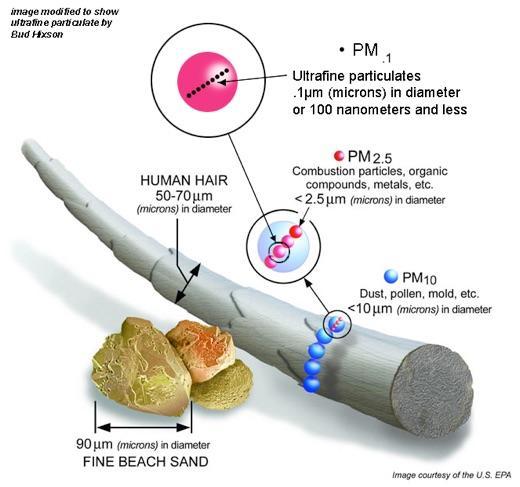Ultrafine Particulate Matter Associated with Lung Cancer
, by Jennifer K. Loukissas, M.P.P.
Investigators in the Occupational and Environmental Epidemiology Branch (OEEB) found an association between long-term exposure to ultrafine particulate matter (UFP), a traffic-related air pollutant, and risk of lung cancer. The findings were published in the American Journal of Respiratory and Critical Care Medicine on October 19, 2023.
Lung cancer is the leading cause of cancer death in the U.S., and a priority of the Cancer Moonshot is to achieve the goal of reducing age-adjusted cancer mortality by 50% by the year 2047. Changing patterns in the histopathology of lung cancer over time, such as increases in adenocarcinoma despite widespread smoking cessation, point to environmental drivers.
Rena Jones, Ph.D., M.S., investigator, Debra Silverman, Sc.D., Director and senior investigator, OEEB, and colleagues, estimated historical UFP exposure and considered smoking and other factors for over 45,000 participants in the NIH-AARP Diet and Health Study aged 50+ at enrollment (1995-1996) who resided in Los Angeles, California, and parts of neighboring Orange and Riverside counties. In this first evaluation of estimated long-term outdoor UFP exposure and lung cancer risk by histologic type, they found a modest association for lung cancer overall and an increased risk of adenocarcinoma among men, but not women. This association was evident in never and former smokers but not among current smokers. They also found that risk was increased in male participants who were oldest at the time of study enrollment, suggesting that higher historical exposures are relevant to this observed relationship.
The International Agency for Research on Cancer has classified ambient outdoor pollution as a carcinogen. Most of the epidemiologic evidence supporting this classification was from studies showing an association between fine particulate matter (PM2.5, <2.5 µm) and lung cancer. Associations for other traffic-related pollutants such as nitrogen dioxide (NO2) are more mixed, and there are few studies of lung cancer and ultrafine particulate matter (<0.1 µm), an unregulated pollutant with unique physiochemical properties that suggest it may be more toxic than larger particles. There have been no prior studies of UFP and lung cancer in the U.S.
The study, known as the Los Angeles Ultrafines Study, has several important features needed to assess this etiologic relationship: substantial regional variation in PM concentrations, large numbers of lung cancer cases, and data on smoking and residential histories. UFP are not regulated or routinely monitored, so a major challenge was to assess long-term, historical exposure. A comprehensive retrospective exposure assessment drew upon some of the only historical data available, supplemented by a mobile ambient monitoring campaign and land use regression model.
Reference
Jones RR et al. Outdoor ultrafine particulate matter and risk of lung cancer in Southern California. Am J Respir Crit Care Med 2023.
Commentary: Hoffmann B and Ogurtsova K. Adding Pieces to the Puzzle - Ultrafine Particles and Lung Cancer. Am J Respir Crit Care Med 2023 Dec 19. Online ahead of print.
